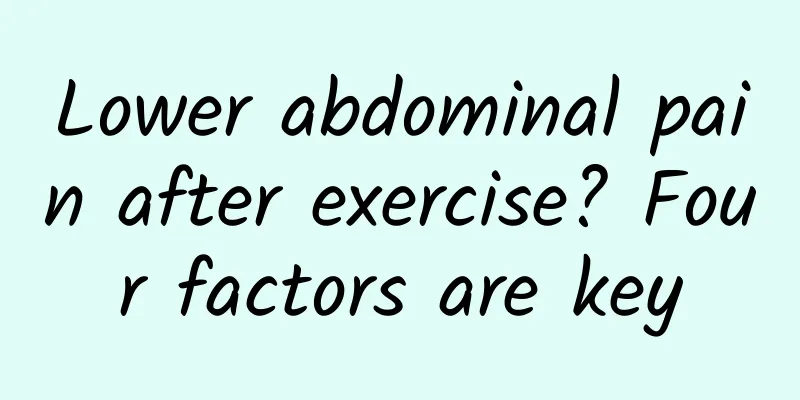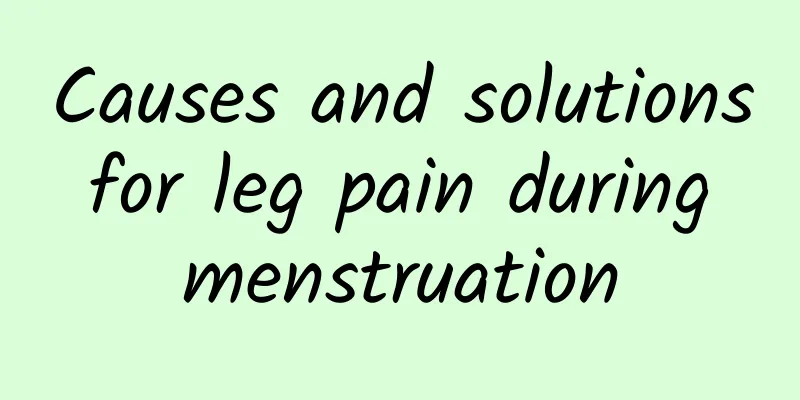Lower abdominal pain after exercise? Four factors are key

|
Whether you are a professional athlete or not, I believe most people have experienced the feeling of "severe pain in the abdomen halfway through exercise." The pain is not caused by gastrointestinal discomfort or the onset of menstruation, but it is still very painful and will force you to slow down or even stop exercising before you can get relief. The pain is usually located on the left and right sides of the ribs and near the lower abdomen, which makes people wonder if there is a problem with the liver, appendicitis, or if the ribs have pierced some organ. In fact, this type of abdominal pain is also called "Exercise-related transient abdominal pain" (ETAP), which often occurs in whole-body exercises with high repetitive movements and the trunk as the main body, such as running, swimming, gymnastics, etc. However, although this kind of pain often happens to everyone and can affect athletic performance, the medical community still has "no clear conclusion" on this phenomenon. Scholars can only find generally accepted statements and speculate on the following possible reasons. 1. Insufficient blood flow to respiratory muscles such as the intercostal muscles or diaphragm, causing hypoxic pain When we are resting, most of the blood will flow to organs such as the liver, kidneys, and stomach, and skeletal muscles only receive 15% to 20% of the blood; when exercising, blood will be sent to the areas that need it most. However, blood flow distribution is not completed instantly, so some muscles will suffer from ischemic pain due to insufficient blood flow to meet the needs of exercise. This pain caused by ischemia is also what researchers currently believe to be the most likely cause of side abdominal pain during exercise! 2. Diaphragm spasm During exercise, the ligaments between the diaphragm and internal organs (especially the liver) are repeatedly stretched, which can cause spasms of the diaphragm and lead to discomfort in the side abdomen. Especially when running, if you exhale while stepping out with your right foot, the diaphragm will move up. In addition, the liver is located at the lower right side of the chest cavity, and the liver will fall due to the stepping out of the right foot. At this time, the ligaments will be repeatedly pulled, which may cause side abdominal pain. 3. Oblique abdominal muscle spasm The oblique abdominal muscles are located in the lateral abdomen and are divided into internal and external muscles. They are mainly responsible for assisting the body to move outward and protecting the internal organs. However, if you do not warm up enough before exercise or use too much force during exercise, you can easily strain the oblique abdominal muscles and cause pain. For example, American player Chen Weiyin was on the disabled list for 15 days a few years ago due to an oblique muscle strain. 4. Do vigorous exercise immediately after a meal The gastrointestinal tract needs sufficient blood after a meal to help digestion and absorption; if you exercise right after a meal, the blood supply to the gastrointestinal tract will be greatly reduced (the blood will flow to various muscles), affecting the secretion of digestive juices. At this time, the gastrointestinal tract will have difficulty digesting and absorbing food, and side abdominal pain will follow. In addition, the study also found that untrained individuals are more likely to experience side abdominal pain; so this tells us that we should proceed step by step when planning exercise intensity. When you have good exercise habits and long-term training experience, you will no longer be so sensitive to side abdominal pain! To prevent the worst from happening, Sibot recommends that you try to reduce the chance of exercising after meals, warm up before exercising, and pay more attention to your own breathing during exercise. Minimize the chances of accidents that may cause side pain. If you do experience abdominal pain during exercise, it is best to reduce the intensity of the exercise or stop exercising immediately. And try to eliminate side abdominal pain by bending forward, taking maximum breaths, and stretching your arms backward and upward while resting. Remember, adhering to the principles of adequate rest and gradually increasing exercise load is the best way to avoid side abdominal pain! ※For more information, please visit TALK Online Magazine |
<<: Three meals of rice with chili for weight loss caused 18 holes in the stomach
>>: Stage actor Deng Jiuyun shares her secrets to maintaining good figure (Part 1)
Recommend
How much does bacterial vaginosis treatment cost?
Bacterial vaginosis has the largest number of pat...
How long after a woman becomes pregnant can she have a painless abortion?
Women who have an unexpected pregnancy can use pa...
What are the common types of menopause?
Understanding the types of menopause is to help e...
Renée Zellweger gained weight and lost weight by eating meat and giving up sweets
Renée Zellweger, who has gained super popularity ...
Basic nursing routine measures for cervical precancerous lesions
Cervical precancerous lesions are a common diseas...
What are the types of pelvic inflammatory disease?
The onset of pelvic inflammatory disease is relat...
Causes of uterine fibroids
The cause of uterine fibroids is currently unclea...
What to eat to reduce uterine fibroids
For the treatment of uterine fibroids, diet thera...
Fruit and vegetable juice helps lose weight! Is cold pressed better?
Fresh fruits and vegetables are essential for los...
What should I do if I have pelvic inflammatory disease?
What should you do if you have pelvic inflammator...
The secret of menstrual cycle weight loss method revealed! Traditional Chinese Medicine: Drinking chicken soup increases metabolism, making weight loss easier
Many women often think that the menstrual period ...
What causes functional uterine bleeding?
Dysfunctional uterine bleeding is abnormal uterin...
What fruits are good to eat when suffering from dysmenorrhea?
Dysmenorrhea is not unfamiliar to many women. It ...
Abnormal leucorrhea and burning sensation when urinating
Abnormal vaginal discharge accompanied by a burni...
What should I do if I find an ovarian cyst after pregnancy?
The pregnant mother was just immersed in joy when...









